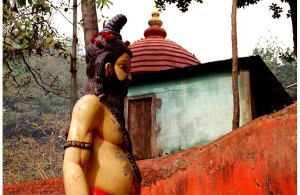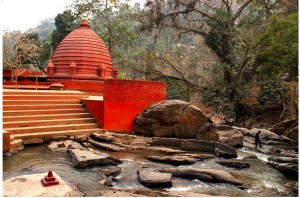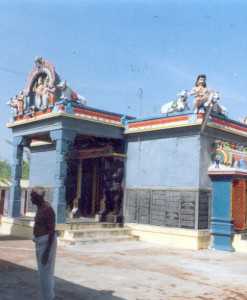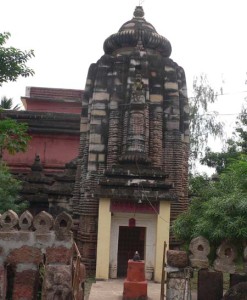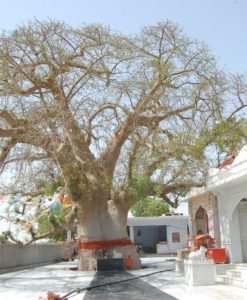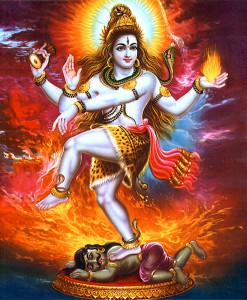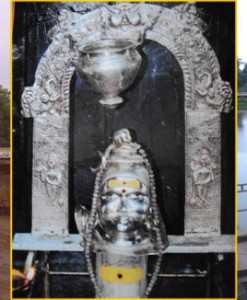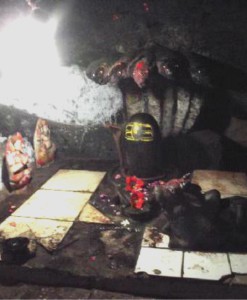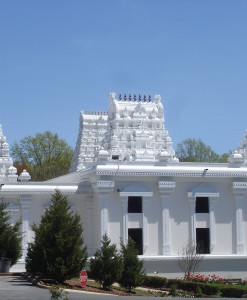No products in the cart.
Basistha or Vasistha Temple is located in Beltola, at the outskirts of the Guwahati city. It is located near Garbhanga Reserve Forest which is populated by elephants and is also a proposed butterfly reserve. The temple was constructed by Ahom king Rajeshwar Singha in 1751-1769. The king also gifted 835 bighas of land to the ashram to build this temple. The temple is situated on the Vasistha ashram, the abode of saint Basistha. The temple is dedicated to Lord Shiva. The temple stands on the bank of mountain streams which originates from the hills of Meghalaya which in turn becomes river Basistha and Bharalu that flows through the city.
Basistha Temple, Guwahati
- Temple History
- Legend
- Architecture
- How To Reach The Temple
- Daily Poojas And Festivals
- Videos
- Additional Information
The Kalika Purana has described the Basistha Temple as one of the seven Shaktipeeths. The history of the Ashram dates back to the Vedic age. The ashram was founded by the great saint Vasistha. Legends say that once saint Vasistha went to Kamarupa to worship goddess Kamakhya. When king Naraka stopped him from doing so, Vasistha cursed him. Vasistha built a hermitage at Sandhyachal and led his life meditating on Shiva. Vasistha muni is credited with writing the Vasistha Ramayana. Vasistha muni had created the ashram and is said to have died here. The grave of Saint Vasistha is seen here.
Guru Basistha was one of the original sapta-rishis, the 7 spiritual gurus described as authors of the Rigveda. He gave his name to the Basistha (Vashishtha) clan. These 7 gurus as supposed to be the 7 stars that make the Great Bear constellation that connects to the Pole star.
In north India, he is known as Guru Vashishtha. In the north-east of India, “v” is pronounced as “b” and “s” is pronounced as “sh”, leading to the apparent change in name.
There are many stories linked to Guru Basistha. The most well-known story has him as the teacher of young princes of Ayodhya in Ramayana, Ram and Lakshman.
Linked to his role as the teacher of Rama is his book “Vashishtha Yoga”, that deals mainly with the meditation part of Yoga. This book is supposed to contain his lessons to Rama about understanding the world reality, and the nature of consciousness and creation. This book explains the importance of achieving shanti (peace), proper vichar (thoughts), santosh (satisfaction) and satsang (good company).
He is also known for another book, “Vashishtha Samhita”, a treatise on “electoral astrology” dealing with the identification of the most auspicious time (mahurat) for carrying out different activities such as marriages and journeys.
By the name Basistha Ashram (or Vasishtha Ashram), it is considered to be the hermitage of the legendary sage Basistha. It is in 14 kilometer away from the centre point of the city. The temple is an ideal scenic spot for the pilgrimage and very popular among the city-dwellers. The temple got a huge number of visitors and tourists locally & from outside the region on daily basis.
The famous Ahom king Rajeswar Singha constructed this temple in between the year 1751-1769. The temple and the location is endowed by the terracotta and stone sculptures which can be seen in the premises of the temple and the nearby hills and stones. The temple is related with the great Maharshi Basistha of the Hindu Epic Ramayana who brought an end to his life in that very place where the present temple is now located. The place where the body of the sage took eternal rest attracts the visitors and tourists who come there to worship him. There are many sculptures which can be seen in the place as well as by the side of the tri-juncture of the hill streams i.e. Sandhya, Lalita and Kanta.
By Road: Basistha Temple is located 14 kilometers away from the heart of the city. It is well connected by buses. One can board the City Bus No. 1 that operates from Adabari to Basistha via Paltanbazar and via Chandmari to reach the temple.
Paltanbazar Bus Stop is located nearby the Paltan Bazar Railway Station and one can avail the City Bus No.1 from paltan bazaar to visit the temple. One can also hire a taxi to reach the temple & also auto services are easily accessible.
By Rail: The Temple is well connected through nearest Paltan Bazar railway station (15 kms)
to major cities railway stations like Delhi, Agra, Mumbai, Chennai, Ajmer, Pali, Jaipur, Ahmedabad.
By Air: The Temple can be reached through nearest LGB International Airport (32.3 Km) which is well connected with regular domestic flights to Delhi, Mumbai, Hyderabad, Bangalore, Chennai and other metropolitan cities.
The temple opens at 6:00 AM and closes at 9:00 PM. During this period rituals of lord Shiva are performed. Archana, Abhishekam and Arathi are the daily rituals performed in the temple.
Shiva Chaturdasi and Maha Shivratri are the festivals celebrated in this temple. During these days the temple is visited by many people to seek the divine blessings of lord Shiva.
Basistha temple attracts pilgrims for the immense beauty. There are wells within the temple which is Shiva-shakti peeth. The shakti peeth is also known as tara peet. Siva linga of Mangaleshwar is hidden in the wells which is not visible. There is a cave which is 5 kms inside the ashram where Basistha muni meditated.


